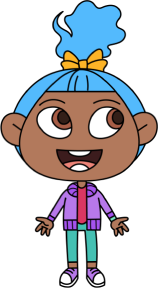Our engaging History lessons employ a narrative structure to captivate students as they learn about the past. Our exciting narrator and stimulating visuals enrich students’ learning experiences. Our explanations of historical terminology and concepts are carefully tailored to our young audience. We want them to learn the gritty details of history with ease. We revisit complex ideas on a regular basis and summarise the key message at the end of each lesson. That way, children have many opportunities to grasp important ideas.
We know that engaging children is the first step towards developing their interest in History. Over time, they will build their understanding of historical concepts, which will no longer seem so foreign to them.
We want to support our viewers along this journey, so here are some tips for parents and educators when using our lessons:
1.Select the appropriate History for Kids series based on your child’s year level at school (shown below).
We have separated our series by stage, rather than year level, as each school may progress through the topics in different order.
Early Stage 1 = Kindergarten
Stage 1 = Year 1 and Year 2
Stage 2 = Year 3 and Year 4
Stage 3 = Year 5 and Year 6
2.Integrate our videos into your school’s History program.
Our videos cover all the content outlined in the NESA History K-6 Syllabus (2012). At Schooling Online, we want students to gain a foundational understanding of History by the end of Year 6.
In each video, the introduction outlines the core topic, and key inquiry questions covered in the lesson. The core topics in primary school focus on students’ personal history and Australian history. We also cover the syllabus content that corresponds to each inquiry question, although this is not shown on screen.
Where applicable, the relevant Australia Curriculum (AC) code is also shown in the introduction and video description. Our content is catered to students across Australia, as our videos cover all the AC codes for K-6 History. We want to ensure that your child’s understanding of History is comprehensive and fulfils national requirements.
Educators can refer to this information when integrating our videos into their yearly teaching planner at their primary school. We want to tailor our videos to your school’s distinct educational program, giving you flexibility when incorporating our videos into your lessons. Parents planning their child’s homeschooling should also refer to the syllabus information in our introductions. The possibilities are endless when our videos are at your fingertips!
3.Establish a viewing routine.
Parents and educators should show our lessons on a regular basis, allowing children to learn at a gradual pace. Sitting down and watching a video could become your child’s favourite part of the day. Children can watch the lessons in preparation for classes at school. They can also watch each video to revisit the historical topics covered in class. We know that children don’t always grasp ideas the first time, so they can watch our videos again and again. The lessons are just one click away!
4.Use the key inquiry question/s to direct children’s learning.
At Schooling Online, we want to motivate children to ask questions about the past. Each lesson focuses on one or more key inquiry questions, based on the syllabus content for each stage. Use these questions as a point of discussion with children as they move through the video. Once the video ends, encourage children to answer each question using their own words. This will allow you to gauge their understanding of the key ideas and involve them in the process of inquiry. Ask children additional questions to develop their oral communication skills, such as:
1. What did you learn from the video that we just watched?
2. Did you learn anything interesting or new?
3. When did that event happen?
4. Why do you think that event happened?
5. Have you heard of this word before? What does it mean?
5.Use our videos to enrich children’s understanding of historical terminology and concepts.
We know that historical terminology and concepts can be challenging for children to learn. Luckily, our lessons support your child through this tricky process. Parents and educators should pause our lessons after the explanation of a key term and ask children to define it using their own words. Take this opportunity to check your child’s understanding and correct it if necessary. We encourage you to share additional examples and explanations with children. Replay sections of the lesson that children find challenging. Make it easy for children to view videos again by saving to my lessons. We’re only a click away!















